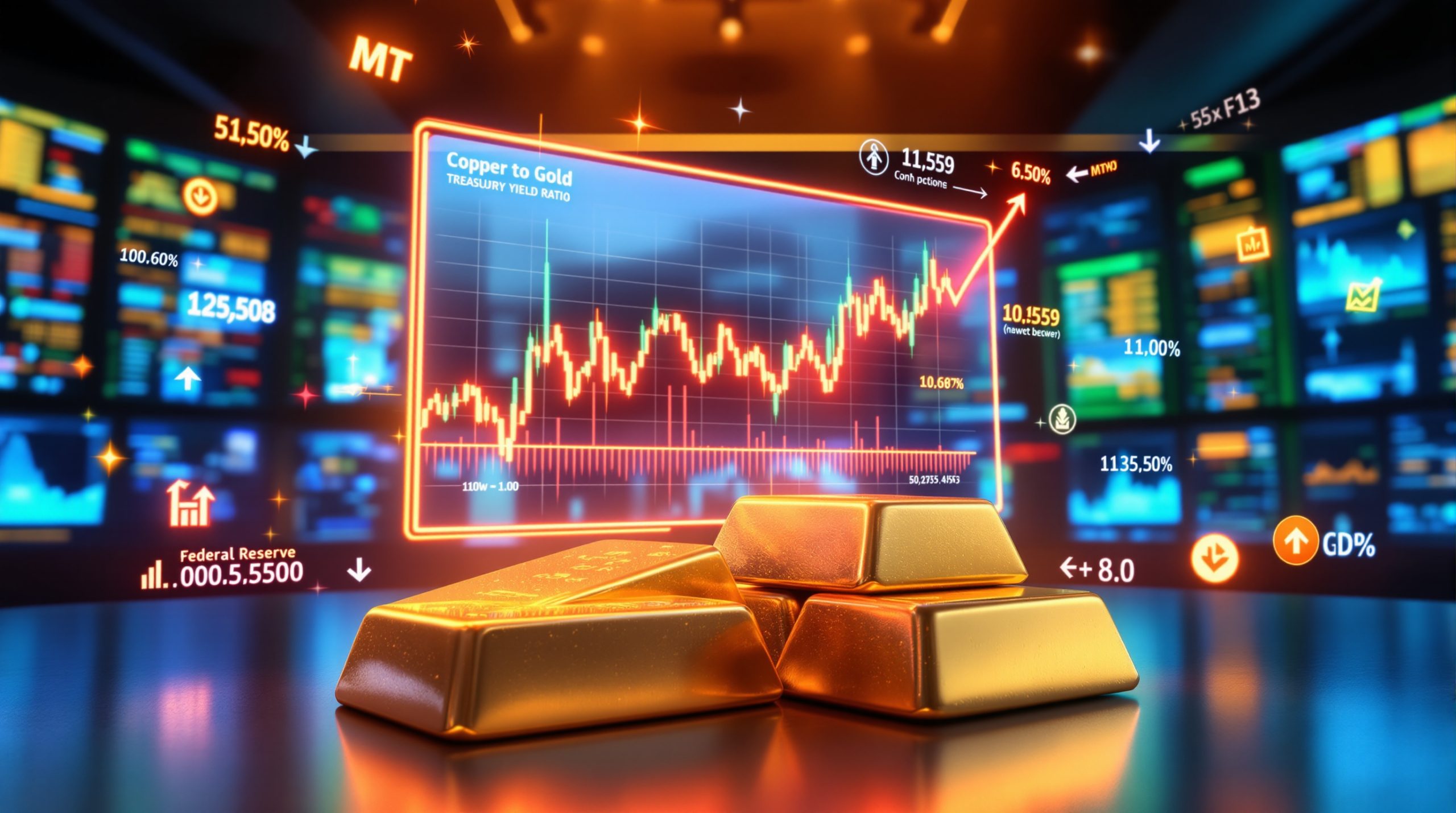How Is Albemarle Navigating the Lithium Price Downturn?
Albemarle Corporation, the world's largest lithium producer, continues to navigate challenging market conditions as lithium prices remain significantly depressed from their 2022-2023 peak levels. Despite these headwinds, the company has shown remarkable resilience, with financial results indicating careful management through this downturn. The company's approach mirrors broader Australian lithium ambitions that continue despite market volatility.
Albemarle's Q1 2025 Financial Performance
Albemarle reported a first-quarter 2025 net loss of $340,000, equivalent to zero cents per share. This represents a substantial improvement from the $9.1 million loss (8 cents per share) recorded in the same period last year. This narrowing of losses comes despite lithium prices having fallen approximately 80% from their 2022 peak levels, according to Benchmark Mineral Intelligence.
The company's lithium production costs currently range between $7,500 and $9,000 per ton of lithium carbonate equivalent (LCE), as revealed during Albemarle's Q1 2025 earnings call. This cost structure has proven critical in helping the company weather the ongoing price compression.
One Bloomberg commodities analyst noted in April 2025: "Albemarle's cost-cutting measures are mitigating lithium price impacts, but margin compression persists across their operations."
The company's Silver Peak, Nevada operations—which produce approximately 5,000 tons of LCE annually—have become increasingly strategic as North American supply chains gain prominence. According to the USGS 2024 report, this facility represents one of the few active lithium production sites in the United States.
What's Behind Albemarle's Decision to Maintain 2025 Guidance?
Despite posting a quarterly loss, Albemarle has maintained its full-year 2025 forecast. This decision suggests that the company sees several potential positive catalysts in the remaining quarters:
- Expected stabilization in lithium prices after significant inventory destocking
- Operational efficiency improvements taking fuller effect later in the year
- Incremental demand growth from battery manufacturers rebuilding inventories
- Cost reduction initiatives offsetting continued price pressures
The company also announced a significant $1.2 billion reduction in capital expenditures for 2025, according to Albemarle's latest investor presentation. This prudent approach to cash preservation signals Albemarle's strategy to maintain financial flexibility while positioning for an eventual market recovery.
Albemarle CEO Kent Masters has emphasized the company's long-term outlook, stating that "Silver Peak's expansion to 10,000 tons by 2026 aligns with IRA incentives" for domestic critical minerals production. This demonstrates the company's commitment to North American operations despite current market challenges.
Market Note: Albemarle's decision to maintain guidance stands in contrast to several competitors who have reduced their 2025 outlooks. This suggests either greater operational confidence or potentially higher risk tolerance in their forecasting methodology.
What's Driving the Global Lithium Market Downturn?
The lithium market's current depression stems from multiple interconnected factors creating a perfect storm of supply-demand imbalance.
Supply-Demand Imbalance Affecting Lithium Prices
Global lithium markets are currently experiencing a substantial oversupply situation, with Fastmarkets estimating a 120,000-ton LCE surplus in 2025. This imbalance has driven lithium hydroxide prices down to approximately $12,000 per ton in Q1 2025, a dramatic collapse from the $80,000 per ton peak witnessed in 2022.
Several factors have contributed to this market imbalance:
- Aggressive capacity expansion by major producers during the 2021-2022 price boom
- New production coming online from operations in Australia, Chile, and Argentina
- Significant inventory accumulation throughout the supply chain during 2023
- Technological improvements enabling more efficient lithium extraction and processing
S&P Global Commodity Insights reported that "inventory destocking by CATL and LG Energy Solution exacerbated oversupply" as major battery manufacturers worked through existing stockpiles rather than purchasing new material.
The market situation has become so challenging that some producers have begun curtailing production. For example, Pilbara Minerals in Australia reduced its output by 20% in March 2025 due to unsustainably low prices.
How EV Market Growth Patterns Are Shifting
Electric vehicle adoption rates, while still growing, have moderated from the explosive growth seen in recent years. According to the China Automotive Association, Chinese EV sales growth slowed to 15% year-over-year in Q1 2025, compared to approximately 90% growth in 2023.
This moderation has significant implications for lithium demand, as China represents approximately 60% of global EV sales. Several factors have contributed to this slowdown:
- Reduction in government subsidies across major markets
- Economic uncertainty affecting consumer purchasing decisions
- Longer vehicle replacement cycles than initially projected
- Battery manufacturers improving lithium efficiency per kilowatt-hour
Battery chemistry shifts have also impacted lithium consumption patterns. LFP (lithium iron phosphate) batteries, which use less lithium than NMC (nickel manganese cobalt) formulations, have gained market share, particularly in entry-level and mid-range EVs.
Regional pricing differentials have emerged, with Chinese spot prices often diverging significantly from Chilean contract prices, creating additional market complexity for producers and consumers alike.
How Does Albemarle's Strategy Compare to Industry Competitors?
Competitive Positioning Among Major Lithium Producers
Albemarle's performance stands in marked contrast to some of its industry peers. While Albemarle posted a modest $340,000 net loss in Q1 2025, SQM reported a much larger $22 million loss during the same period. Meanwhile, Livent Corporation has already reduced its 2025 output guidance by 15%, according to its Q1 2025 report.
A key differentiator appears to be production costs. Albemarle's cash cost per ton of approximately $7,500 compares favorably to SQM's estimated $8,200 per ton, according to Roskill's 2025 industry analysis. This cost advantage provides Albemarle with greater operational flexibility during price downturns.
Morgan Stanley Research pointed out that "Albemarle's vertical integration buffers it better than pure-play miners" due to its diversified business model and greater control over the value chain.
The company's debt-to-equity ratio of 0.5 also compares favorably to industry averages, providing greater financial stability than some competitors like Pilbara Minerals (0.3).
Strategic Advantages of Albemarle's Silver Peak Operations
Albemarle's Silver Peak, Nevada facility has taken on heightened strategic importance in recent years. This operation represents one of the few active lithium production sites in the United States, giving Albemarle several competitive advantages:
- Qualification for domestic production tax credits under the Inflation Reduction Act
- Reduced supply chain risks compared to overseas operations
- Lower transportation costs to North American battery manufacturers
- Strategic positioning as automakers seek IRA-compliant battery materials
The company has implemented a Direct Lithium Extraction (DLE) pilot program at Silver Peak with the potential to reduce production costs by approximately 30%. This technological advancement could prove transformative if successfully scaled.
Albemarle has also secured a five-year contract with Tesla for battery-grade lithium hydroxide, underscoring the strategic value of its North American production assets even amid broader market challenges.
What Are Albemarle's Options for Navigating Market Challenges?
Cost Optimization and Operational Efficiency Measures
Albemarle has implemented several measures to navigate the current downturn:
- Reduced capital expenditures by $1.2 billion for 2025
- Optimized extraction efficiency at existing operations
- Deferred certain expansion projects until market conditions improve
- Implemented workforce reductions in administrative functions
These initiatives have helped Albemarle maintain a strong liquidity position of $2.8 billion in cash reserves as of Q1 2025. This financial flexibility provides important runway during continued market weakness.
UBS Mining Analysts have noted that "high-cost producers face existential risk below $10,000/ton lithium," highlighting the importance of Albemarle's cost competitiveness in the current environment.
Strategic Growth Initiatives Despite Market Headwinds
Despite challenging market conditions, Albemarle continues to pursue selective growth initiatives that position the company for the eventual market recovery:
- $200 million acquisition of a Chinese lithium recycler in April 2025, expanding circular economy capabilities
- Continued development of next-generation extraction technologies
- Maintenance of key customer relationships with major battery manufacturers
- Strategic alignment with IRA incentives for domestic mineral production
The company's pilot project implementing Direct Lithium Extraction technology at Silver Peak demonstrates Albemarle's commitment to innovation even during market downturns. If successful, this technology could reduce water consumption by up to 70% while improving lithium recovery rates.
Industry Insight: Lithium recycling is becoming increasingly important as battery materials become more valuable. Albemarle's recent acquisition positions the company to capture value from this emerging segment of the supply chain.
When Might the Lithium Market Recover?
Key Indicators Signaling a Potential Market Turnaround
Several indicators may signal an eventual recovery in lithium markets:
- LCE futures curve showing contango through Q4 2025 (CME Group data)
- Battery manufacturer inventory levels falling below 60-day supply
- Production curtailments from high-cost producers accelerating
- Chinese EV sales growth reaccelerating above 20% quarterly
Market observers should monitor lithium spot prices in China, as this market typically leads global pricing trends. Any sustained increase in Chinese spot prices would likely signal the beginning of a broader recovery.
Price stabilization would likely occur first in battery-grade lithium hydroxide, which faces tighter supply-demand dynamics than lithium carbonate due to its application in high-performance battery chemistries.
Long-Term Lithium Demand Projections
Despite current market challenges, long-term lithium demand projections remain robust. BloombergNEF forecasts EV battery demand CAGR of 25% through 2030, which would require substantial additional lithium supply.
Several factors support this continued growth trajectory:
- Global EV penetration remains below 15% in most major markets
- Grid-scale energy storage applications increasing lithium demand
- Industrial applications providing baseline demand regardless of EV trends
- Limited substitution possibilities for lithium in battery applications
The long-term supply-demand balance appears favorable, even if the path to equilibrium involves continued near-term volatility. The Lithium Americas Thacker Pass project in Nevada, which secured a $1 billion DOE loan, represents the type of major new supply that will be needed to meet projected demand growth. Furthermore, Rio Tinto's lithium leap in Argentina shows continued corporate confidence in lithium's future.
How Should Investors Interpret Albemarle's Current Position?
Financial Health Assessment
Albemarle maintains a relatively strong financial position despite market challenges:
- $2.8 billion cash reserves as of Q1 2025
- Debt-to-equity ratio of 0.5, below many industry peers
- Dividend yield of 0.8% compared to S&P 500 average of 1.5%
- Substantial reduction in 2025 capital expenditures
The company's decision to maintain its dividend, albeit at a yield below market averages, signals confidence in its long-term financial sustainability. However, investors should monitor free cash flow metrics in coming quarters as an indicator of dividend sustainability.
Albemarle's relatively strong balance sheet provides financial flexibility to weather prolonged market weakness or potentially acquire distressed assets from competitors facing greater financial pressure.
Investment Considerations for the Lithium Sector
Investors evaluating lithium producers should consider several factors:
- Production cost position relative to current and projected prices
- Geographic diversification of production assets
- Technological differentiation in extraction or processing
- Customer relationships with battery and EV manufacturers
- Financial strength to endure prolonged market weakness
The lithium market has historically demonstrated pronounced cyclicality, with periods of undersupply followed by oversupply. Current price levels appear to be below the marginal cost of production for many operators, suggesting limited additional downside risk from current levels. Those interested in the mining sector more broadly should consider investing in mining stocks with a long-term perspective.
Investment Perspective: Commodity markets often reach their lowest points when high-cost producers begin shutting down operations. Recent production curtailments from Australian producers may signal approaching price stabilization.
What Does the Future Hold for Lithium Supply and Demand?
Evolving Lithium Production Landscape
The global lithium production landscape continues to evolve rapidly:
- Direct Lithium Extraction (DLE) technologies promising higher recovery rates
- Improved brine processing reducing project development timelines
- Increasing focus on environmentally sustainable extraction methods
- Growing emphasis on recycled lithium from end-of-life batteries
Several major projects face development challenges. For example, Ganfeng Lithium recently delayed its Maricunga (Chile) project amid financing difficulties, highlighting how current market conditions are impacting the project pipeline.
The EU Critical Raw Materials Act has created additional complexity for global lithium supply chains, with European battery manufacturers increasingly seeking EU-compliant sources of lithium to qualify for incentives. In response, countries like Canada are developing resources like Canada's lithium carbonate plant to meet this demand.
Battery Technology Developments Affecting Lithium Demand
Battery technology continues to evolve in ways that impact lithium demand:
- Increasing energy density reducing lithium requirements per kilowatt-hour
- Solid-state battery research potentially changing lithium demand patterns
- LFP chemistry gaining market share in entry-level EVs
- Sodium-ion batteries emerging as potential competitors in specific applications
Despite these technological shifts, lithium remains fundamental to most commercial battery chemistries. The absolute growth in battery production is expected to more than offset efficiency improvements, resulting in continued lithium demand growth. This reality has prompted many companies to make strategic lithium investments even during the current price downturn.
FAQ: Understanding Albemarle and the Lithium Market
What factors determine lithium pricing in global markets?
Lithium pricing is influenced by several interconnected factors:
- Supply-demand balance in key consumption regions
- Chemical specifications (battery-grade versus technical-grade)
- Contract versus spot market dynamics
- Form of lithium (carbonate, hydroxide, or specialty compounds)
- Geographic origin (especially with emerging regional regulations)
Contract prices typically lag spot market movements, creating temporary arbitrage opportunities during price transitions. Current market conditions feature significant price differentials between Chinese domestic prices and export markets.
How do lithium producers typically respond to price downturns?
Lithium producers employ several strategies during market downturns:
- Production curtailment at highest-cost operations
- Capital expenditure deferrals for expansion projects
- Cost reduction initiatives across operations
- Focus on value-added products with higher margins
- Inventory management to avoid selling at cyclical bottoms
The industry is currently witnessing these responses, with several Australian hard-rock producers announcing production cuts in early 2025.
What are the key differences between brine and hard rock lithium production?
The two primary lithium production methods have distinct characteristics:
Brine Operations:
- Typically lower production costs ($5,000-$8,000/ton)
- Longer development timelines (3-5 years)
- Higher environmental water consumption concerns
- Lower carbon footprint per ton produced
- Production flexibility limitations during market downturns
Hard Rock Operations:
- Generally higher production costs ($8,000-$12,000/ton)
- Faster project development timelines (2-3 years)
- Better chemical purity for battery applications
- Greater production flexibility to respond to market conditions
- Higher carbon intensity in the extraction and processing
Albemarle's operations include both methodologies, with Silver Peak representing a brine operation while the company also has investments in Australian hard rock assets.
How might geopolitical factors influence the lithium market?
Geopolitical considerations increasingly impact lithium markets:
- Resource nationalism in key producing countries like Chile and Argentina
- Trade policy changes affecting critical minerals supply chains
- Domestic production incentives under programs like the US
Ready to Stay Ahead of Major Mineral Discoveries?
Discover significant mining opportunities before the broader market by leveraging Discovery Alert's proprietary Discovery IQ model, which delivers instant notifications on ASX mineral discoveries and transforms complex data into actionable insights. Start your 30-day free trial today at Discovery Alert to secure your market-leading advantage.




